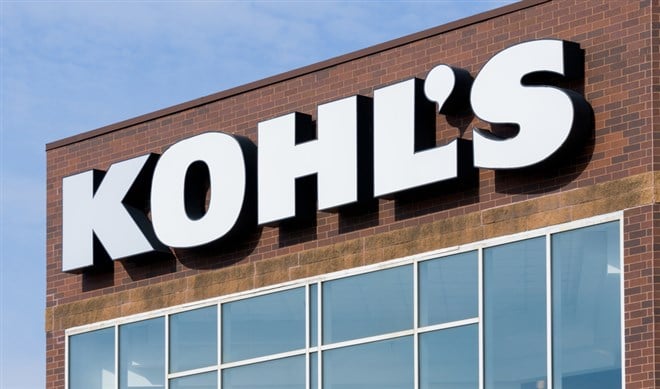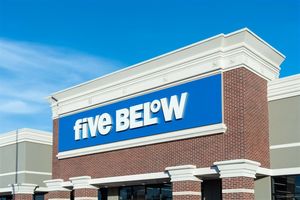
Like other department stores, Kohl’s Corporation (NYSE: KSS) is hoping consumer confidence improves during the holiday shopping season. The Fed, on the other hand, would rather not see Americans getting more positive about the economic environment. This runs the risk of inflation heating back up at a time when Chairman Powell and company are trying to keep it down.
Retailers and investors alike are therefore left to decipher when good news is truly good for the stock market — or just another reason for the Fed fire extinguisher to raise rates.
The latest University of Michigan sentiment survey is a prime example. A better-than-expected 59.1 reading revealed that consumers are in better spirits. Price increases are moderating and gift deals aplenty.
This should mean Kohl’s is in for a strong fourth quarter that carries over to 2023, right? Not so fast.
The company still has several challenges to work through that go beyond consumer confidence. Even though its shares have dipped back to within a few bucks of a 52-week low, investors should not be loading up the shopping cart just yet.
How Did Kohl’s Perform in the Third Quarter?
There’s a reason that ugly Christmas sweater is marked down 50%. Kohl’s profits were down by the same percentage in Q3.
Management acknowledged that inflation continues to hit hard. Faced with higher prices everywhere, the middle-class households in Kohl’s wheelhouse simply aren’t spending as much. They are buying fewer items and shifting to cheaper value brands.
In a way, the trade-down is a positive. About one-third of Kohl’s sales come from private label and exclusive merchandise which typically carry higher margins. These brands outperformed national brands for the second straight quarter.
Unfortunately, this hasn’t been enough to help the bottom line because of Kohl’s rising cost structure. When you operate more than 82 million square feet of retail space mostly located in strip malls, leasing, utilities, wage and other expenses can add up. Along with increased freight costs and promotional activity, the Q3 gross margin dropped from 39.9% to 37.3%.
What Other Headwinds is Kohl’s Facing?
Kohl’s chunk of the retail sales pie has been declining for years. The Amazon effect and the emergence of other online retailers have made it difficult for the department store to be relevant. Given the accelerated shift to e-commerce caused by the pandemic, Kohl’s uphill battle has only become steeper.
Yes, Kohl’s does have an online storefront and has made improvements in this arena over the last couple of years. The problem is digital sales are trending backward when other traditional retailers have strong digital growth offsetting brick-and-mortar weakness. Kohl’s digital sales fell 8% last quarter, a significant result because they accounted for nearly 30% of total sales.
The sales mix is also an issue in this economy. With consumers spending more on groceries and other essentials, little room is left for discretionary purchases. For Kohl’s, it's a recipe for failure given roughly one-half of all sales are derived from clothing and another one-fifth from home goods. Nudist colonies aside, clothes are arguably essential — but when budgets are stressed, existing wardrobes get called upon to go the extra mile.
Another major question mark is leadership. CEO Michelle Gass is leaving Kohl’s for Levi Strauss where she is expected to eventually take on the same role. This has created a void that has yet to be filled and an air of uncertainty around the new leadership team’s strategy. How the new CEO meshes with activist investor Macellum Advisors is another big matzo ball of uncertainty.
What are Wall Street’s Revenue Estimates for Kohl’s?
An unexpected management upheaval and a tough economic climate prompted Kohl’s to withdraw its fourth-quarter and full-year guidance. Never a comforting move, especially considering the importance of the holiday shopping period. Consumers may be gaining confidence, but Kohl’s shareholders sure aren’t.
For Q4, Wall Street is forecasting a fourth straight quarter of lower revenue. Consensus estimates for the next three quarters call for goose eggs, i.e. 0% growth. Annual sales have yet to return to pre-Covid levels, so the lack of forecasted growth is especially troublesome — and spells further market share losses to the Amazons of the world.
The trailing P/E ratio of 6x may seem to put Kohl’s on the bargain rack but this is a value trap. Cost inflation, a secular shift to e-commerce and an interim CEO at the helm amount to a lot of uncertainty. The valuation is where it is because a Kohl’s investment carries a ton of risk. Sales have barely budged from 2019 levels, so for the stock to be hovering near its pandemic low makes perfect sense.
Kohl’s board contemplated a sale in July 2022 but decided a retail slowdown and rising interest rates didn’t add up. Since then, the stock has gone sideways as the market awaits the next potential catalyst. It doesn’t appear M&A will come to the rescue anytime soon, so Kohl’s will likely be a ‘show me’ turnaround story two-plus years in the making.




